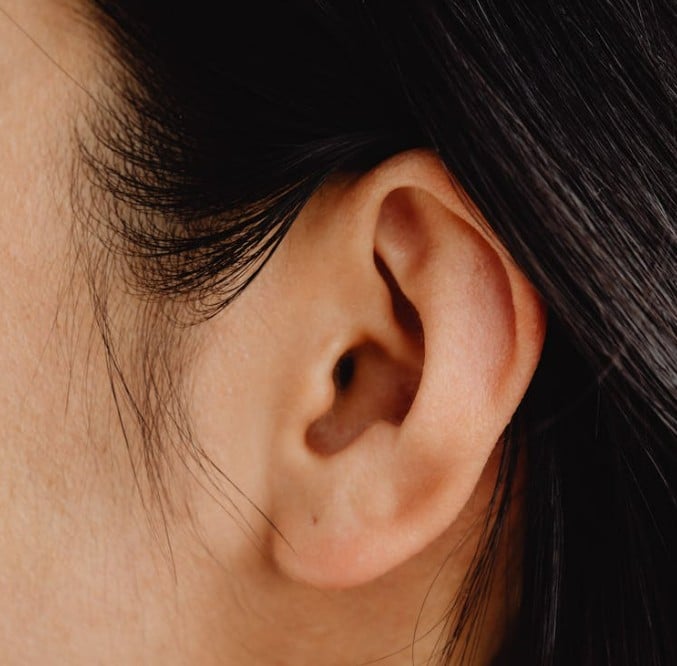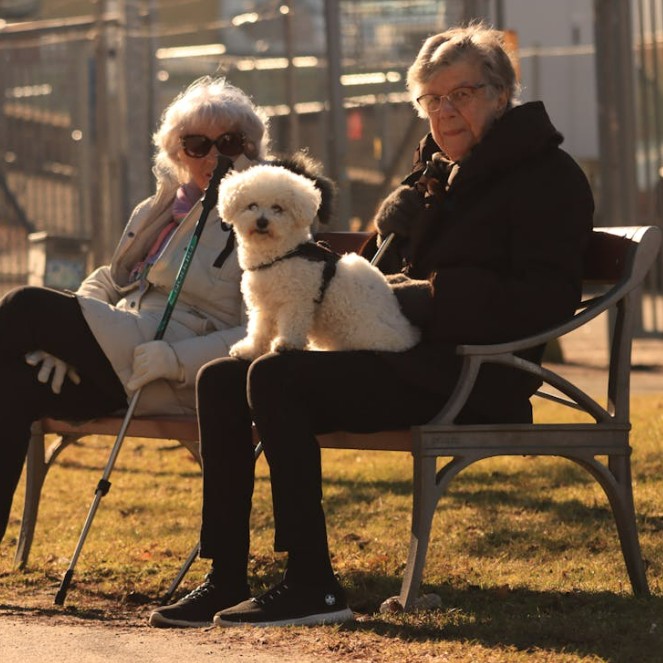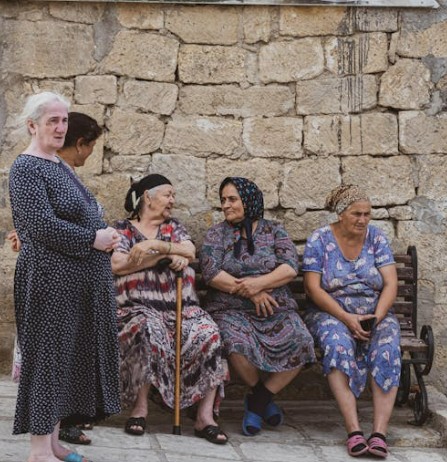Beyond mere physical possessions, the traits we inherit from our grandmothers often extend to subtle characteristics that shape who we are. This exploration delves into how physical features, personality quirks, and behavioral tendencies are passed down, forging a unique and enduring family legacy.
Eye Color


Eye color is a trait influenced by multiple genes, which govern the type and amount of pigment in the iris. Though once thought to be dictated by simple dominant and recessive patterns, it’s now understood to involve genes like OCA2 and HERC2. Your grandmother’s genetic makeup might influence your eye color, potentially skipping generations. While environmental factors and aging can affect the intensity, the basic color is genetically determined. Family patterns often provide fascinating insights into how eye colors are inherited.
Hair Color and Texture
Hair color results from the balance of two melanin types, eumelanin and pheomelanin, controlled by several genes. This genetic mix can produce a range of colors within a family, from blonde to black, with your grandmother’s genes directly impacting your hair shade. Hair texture is similarly genetic but can change over time due to hormonal influences. Familial trends, such as curly hair being common on one side, often emerge. Even if your immediate family doesn’t share your hair traits, they could still be inherited from your grandmother.


Widow’s Peak
A widow’s peak, characterized by a V-shaped point in the hairline, is a classic example often used in genetics, though its inheritance is more complex than just dominant traits. If your grandmother had a widow’s peak, there’s a significant chance it might appear in her descendants, sometimes subtly or altered by changes in the hairline over time. Both family sides contribute to the presence of a widow’s peak, but seeing one in a grandparent is a strong indicator of potential inheritance.


Dimples
Cheek dimples, charming indentations that appear when smiling, are typically considered a dominant trait, but the reality of genetic influence is more nuanced, affecting how prominently they’re expressed. If your grandmother has dimples, it increases the likelihood that they could appear in you or your descendants. Dimples may diminish with age, complicating observable inheritance patterns. Multiple genes are believed to be involved, allowing for dimples to emerge unexpectedly across generations.


Freckles
Freckles, small brown spots enhanced by sun exposure, relate to genes affecting melanin production, particularly near the MC1R gene. A grandmother prone to freckling might pass this trait to her grandchildren, though visibility is influenced by sun exposure. Freckles typically are more prominent in youth and may fade as one ages but are commonly observed on sun-exposed areas like the face and arms.


Body Shape and Fat Distribution
Body shape and fat distribution patterns often run in families. The body build of a grandmother can be evident in grandchildren if they inherit similar genetic markers that affect metabolism and fat storage. While genetics play a crucial role, lifestyle choices like diet and exercise significantly impact these traits’ expression. Recognizing similar body shapes in family members can spark valuable conversations about health and lifestyle.


Smile Lines or Facial Wrinkle Patterns
The aging process of your face, including the development of smile lines and other wrinkles, has a hereditary aspect. If you notice particular patterns in your grandmother, such as distinctive lines around the eyes or mouth, you may see similar trends as you age. These traits are influenced by genes related to collagen and elastin. Although genetic, environmental factors like sun exposure and skincare habits also substantially affect how these aging signs develop.


Earlobe Attachment
Earlobe attachment, whether free or attached, is often used as an example in genetics, although the inheritance is influenced by multiple genes. You may find you share similar earlobe structure with your grandmother due to shared genetic traits. Some individuals display earlobes that are neither completely free nor attached, highlighting the complex nature of genetic inheritance. Observing earlobes in your family can provide a clear, visual connection to your genetic heritage.


Nose Shape
The shape of your nose is determined by various genetic factors that influence aspects like nostril size, bridge height, and the tip’s shape. While environmental factors such as injuries can alter its appearance, genetic influences often lead to a “family nose” seen across generations. Your grandmother’s genetic contribution might mix with other ancestors’ traits to create distinct familial features, with shared characteristics like a noticeable bump or narrow bridge often being a clear indicator of genetic inheritance.


Chin Cleft (or “Cleft Chin”)
A cleft chin, characterized by an indentation in the center of the chin, can vary in expression from pronounced to subtle and is often considered a dominant trait. If your grandmother has a cleft chin, there’s a possibility you or your siblings might inherit it, though it can skip generations due to interactions with recessive genes. Changes in facial fat distribution over time can also affect the visibility of a cleft chin, making the inheritance pattern less apparent. When visible, a cleft chin serves as a distinctive mark of family resemblance.


Ear Shape
Beyond the simple free or attached earlobe, other specific ear features like the curvature of the helix or Darwin’s tubercle are also inheritable. Families often recognize a unique “ear shape” that recurs through generations. While environmental factors like injuries rarely alter these genetic traits, a comparison of family photos often showcases how consistently ear shape is passed down.


Color Blindness (X-linked Forms)
The most common types of color blindness, such as red-green color blindness, are linked to the X chromosome. If your grandmother carries the gene on one of her X chromosomes, she could pass it on to her children, and subsequently, it could affect her grandchildren—particularly through her sons. Men are more likely to express color blindness with just one affected X chromosome, while women typically need two. Despite being termed “color blindness,” most affected individuals experience difficulty distinguishing certain colors rather than a total absence of color.


Certain Health Predispositions (e.g., BRCA Mutations)
Mutations in genes like BRCA1 or BRCA2 greatly increase the risk for breast and ovarian cancer. If your grandmother carried such a mutation, there is a chance it could be passed down to subsequent generations. Although these genetic predispositions don’t guarantee cancer will develop, they do inform medical screening and prevention strategies. Genetic testing can identify these mutations, aiding in making informed health decisions based on family history.


Lactose Tolerance or Intolerance
The ability to digest lactose into adulthood depends on genetic variants affecting lactase enzyme production. This trait, known as lactase persistence, is influenced by specific genetic changes and varies across populations. If your grandmother had this genetic variant, it increases the likelihood of lactose tolerance in her descendants. Dietary changes and gut health can also affect lactose intolerance, even among those with the persistence gene.


Taste Sensitivity (e.g., PTC Tasting)
Sensitivity to bitter compounds like phenylthiocarbamide (PTC) is influenced by the TAS2R38 gene. This gene variation can make certain foods taste particularly bitter. If your grandmother was a strong taster, you might have inherited the same gene variant, affecting your perception of bitterness in foods such as kale and Brussels sprouts. Testing for PTC sensitivity can be a fun way to explore genetic similarities in taste perception within families.


Handedness (Partial Genetic Influence)
Handedness, the preference for using one hand over the other, has a genetic component but is not solely determined by genetics. Observing a higher occurrence of left-handedness in your grandmother’s family could indicate a genetic influence, though environmental factors also play a significant role. This mix of genetic and environmental influences makes handedness a particularly interesting trait to track in families.


Mannerisms Influenced by Genes and Environment
Mannerisms, such as gestures, walking style, or facial expressions, can be subtly influenced by genetics but are also significantly shaped by the environment and learned behavior. You might find yourself mimicking mannerisms of your grandmother, reflecting both genetic predispositions and the effects of spending time together. Studies on separated identical twins have shown that even without contact, twins often share similar mannerisms, suggesting a strong genetic basis.


Blood Type (ABO System)
The ABO blood group system is determined by specific gene variations, with each person inheriting one allele from each parent, including one from your grandmother. This genetic contribution influences your blood type, which can be predicted by knowing the blood types of your family members. Additionally, the Rh factor, another genetic trait affecting blood, adds further complexity to understanding familial blood type patterns.


Rh Factor (Positive/Negative)
The Rh factor, a protein on red blood cells, determines whether someone is Rh-positive or Rh-negative. This trait follows Mendelian inheritance, where the positive allele is dominant. The Rh status of your grandmother, along with the contribution from your other grandparent, can influence your own Rh status. While typically not affecting daily activities, Rh factor is crucial during pregnancy, as Rh incompatibility between a mother and her fetus necessitates medical oversight. Documenting your grandmother’s Rh status can be valuable for understanding your family’s blood type dynamics and preparing for potential medical considerations in pregnancies.


Please SHARE this with your friends and family.







